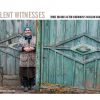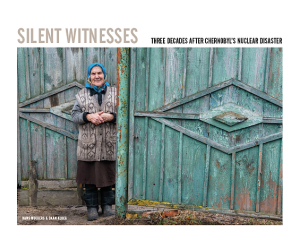Dr. Sherman writes for counterpunch.com, Weekend Edition Aug 30-Sep 01, 2013
No, not that one, the soap opera that ran from 1956 to 2010, but our world that turns. As we look at a weather map on TV or in our paper, we see clouds, rain, snow, and storms coming from west to east. What is in the air above the earth precipitates as our earth revolves underneath what is in that air. To demonstrate this, look at a globe of the world and realize that what the weather is in Chicago today will be the weather on the east coast tomorrow.
With this concept in mind we understand that releases from the Fukushima Daiichi Nuclear Power Plant that began on March 11, 2011 crosses the Pacific Ocean and reaches land throughout the northern hemisphere, and contaminates all life that dwells upon the land and in the waters. As was documented after the Chernobyl catastrophe, fallout is not uniform, but varies by wind direction, elevation and temperature.
The current revelations from Fukushima portend dire consequences for all life. Some scientists have expressed concern about a possible “China Syndrome” — named after the 1979 film starring Jane Fonda, Jack Lemmon and Michael Douglas, that was released the same year as the Three Mile Island Nuclear Power Plant in Pennsylvania experienced a partial meltdown.
Tokyo Electric Power Company (TEPCO,) the owner of the Fukushima plant, has been pouring millions of gallons of water onto the reactor cores and spent fuel rod pools to keep them from overheating. This has resulted in TEPCO trying to store some 400 tons of contaminated water each day, some of it so highly contaminated that workers cannot get close enough to find the leaks. Given that water runs downhill, the contamination is leaking past barriers and into the Pacific Ocean. As of August 21, 2013, markedly increased levels of radioactive tritium, cesium and strontium are reported.
Isotopes are taken up by sea life, including plants, single-cell organisms, algae, seaweed, crabs, oysters, fish, mammals and other sea creatures. A resolution from the American Medical Association called for the FDA to measure radioactivity levels in edible commercial Pacific Ocean fish sold in the U. S. To date the FDA has not responded to the request, so we do not know if testing has been done, and if done, if any data are available for the public. This is not unlike events immediately after the Fukushima meltdown when the EPA released data on elevated levels of radioactive iodine (I-131) along the west coast, and then in May, reverted to “quarterly measurements.”
Currently, US “guidelines” allow for food levels of 1200 Becquerel’s per kilogram, one of the highest in the world. Japan’s limit is 100, so food too contaminated to sell in Japan could be sold here in the U.S.
According to recent news, the U. S. government is collecting data on our phone and e-mail transactions. If this is a worthwhile use of citizen’s taxes, then collecting data on radiation levels in food, a significant health risk, should be worthwhile also. Sick children and adults are a burden on our economy and society as a whole. Preventing exposure to food contaminated with radioactive isotopes is primary preventive health.
What is happening as a result of the Fukushima meltdown and subsequent inability to control the releases may not be all that different from soap opera events. Similarly, As the World Turns, aired on CBS, we are living in a fantasy world if we think that nuclear power is “safe.”

